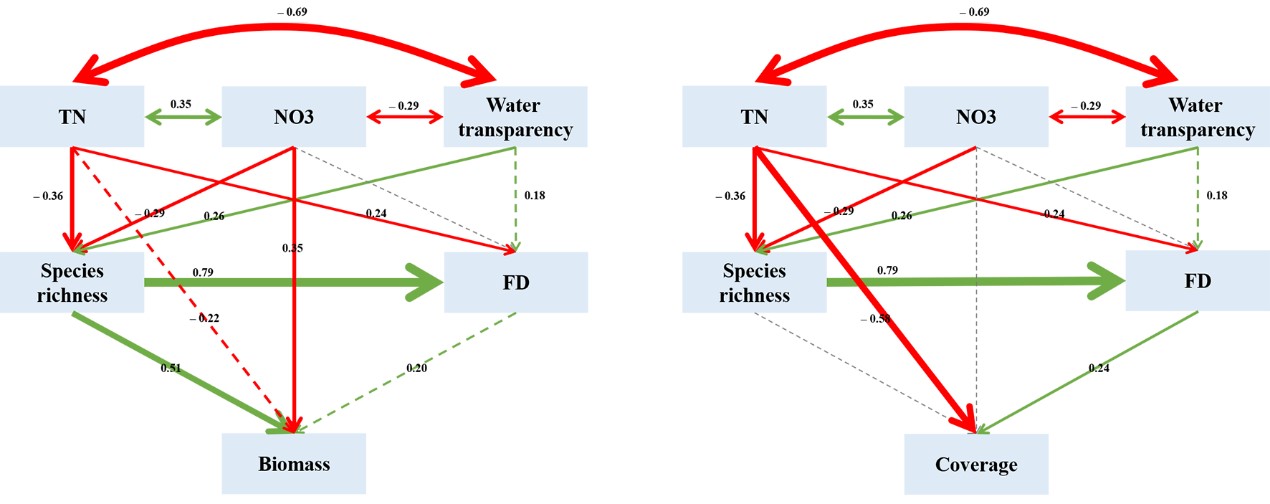Highlights
Submerged Macrophytes Biodiversity Buffers Impact of Eutrophication Stress on Ecosystem Functioning
Biodiversity conservation is one of the hottest topics in the world today, with the aim of preserving the ecosystem functions embedded in different species. The positive relationship between biodiversity and ecosystem functioning (BEF) has been widely proven under artificially manipulated experiments. However, the relationship remains uncertain in complexly natural environment, which creating confusion in conservation strategies.
The species number and distribution area of submerged macrophytes have suffered severe declines due to eutrophication over the past decades. Submerged vegetation restoration is an important technology for improving lake aquatic ecology, but usually only one or two species, such as Vallisneria natans or Hydrilla verticillate, were selected in this process, which was much lower than the diversity of submerged macrophytes in nature. Therefore, it is of practical significance to investigate the effect of submerged macrophytes biodiversity on ecosystem functioning under eutrophication pressure for the aquatic ecology restoration of lakes in China.
Recently, a research group led by Prof. CAO Te from the Institute of Hydrobiology (IHB) of Chinese Academy of Sciences demonstrated that submerged macrophytes biodiversity has a positive impact on ecosystem functioning under eutrophication, and identified that functional diversity index had the strongest explanatory power for ecosystem functioning. This study was published in Environmental Pollution.
In the study, based on extensive field sampling data of submerged macrophytes communities (49 lakes and reservoirs in the Yunnan-Guizhou Plateau, Southwest China), the researchers found that species richness and functional diversity can contribute to ecosystem functioning in a direct or indirect way by constructing a structural equation model, but nitrogen- nutrition has the negative impact on ecosystem functioning.
To find out which biodiversity index had the most predictive power for ecosystem functioning, the researchers regressed ecosystem functioning with three biodiversity indexes. The results showed that the adjusted R2 of the regression analysis between functional diversity and ecosystem functioning was the highest.
Finally, the researchers demonstrated that communities can maintain ecosystem functioning by changing community functional composition or the relative importance of “niche complementarity” or “selection effects” through the principal component analysis (PCA) and the linear and quadratic regression.
These findings provide a scientific basis for the restoration and management of lakes, i.e., submerged vegetation restoration should week out the previous single species restoration patterns, and switch to a diverse cultivation pattern to improve lake water quality.

Positive relationships between submerged macrophytes biodiversity and ecosystem functioning under eutrophic stress (Green arrows represents positive effects, red arrows represents negative effects) (Image by IHB)
(Editor: MA Yun)